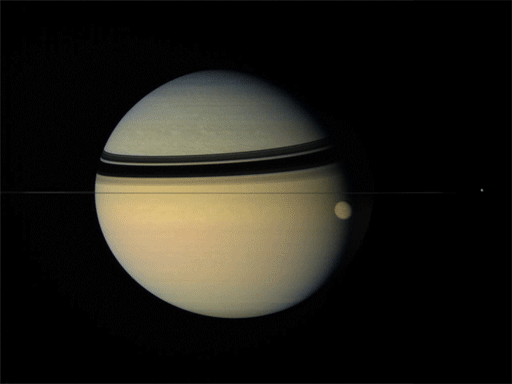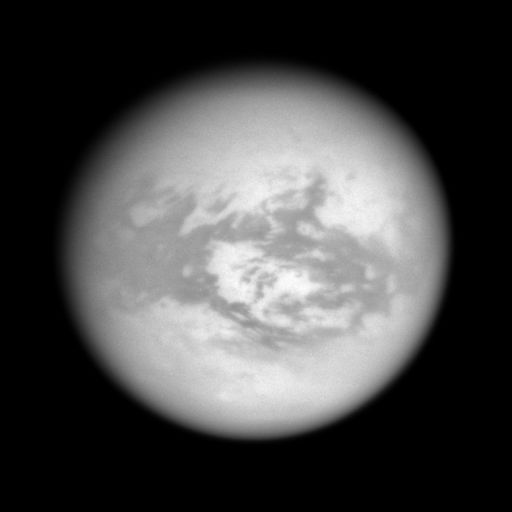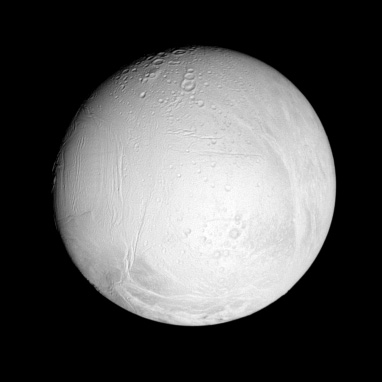Emily Lakdawalla • Aug 10, 2007
Some cool Cassini images
This animation, produced by Gordan Ugarkovic, is one of the coolest I've seen in a long time. You really get a perspective on what a monster moon Titan is compared to the other little iceballs. Gordan produced it by colorizing images that were captured at a wavelength invisible to human eyes. This particular wavelength is one in which methane is relatively transparent. So we can see through some of the methane haze on both Saturn and Titan. Thus the animation gives you details you couldn't possibly see with your own eyes -- the motion of Saturn's cloud bands, and murky hints of surface features on Titan. The color is artificial, but is based upon reality, color images taken at other times of Saturn and Titan.

NASA / JPL / SSI / color and animation by Gordan Ugarkovic
Titan, Dione, and Saturn
When enlarged to full size, this animation is composed of sixteen wide-angle frames captured by Cassini on July 29, 2007. The images were taken through a filter in a methane "window," so details in Saturn's clouds and on Titan's surface that are usually obscured by methane haze are visible. Each image has been colorized based upon other natural-color Cassini images. Titan transits Saturn from left to right as much smaller, brighter Dione moves from right to left at the extreme right edge of this image. Titan's rings are seen edge-on so are almost invisible. The rings cast broad black shadows on Saturn's northern hemisphere. The full-size version is best viewed as a Quicktime movie (264k).
NASA / JPL / SSI
Titan's anti-Saturn hemisphere
Titan's equatorial regions are covered with dark-toned deposits of sand dunes. This image, of the anti-Saturn side of Titan, was captured by Cassini on June 14, 2007. The bright region at the center is called Adiri; the Huygens probe landed off of the northeastern edge of this bright region. The image has been rotated so that north is up.Support our core enterprises
Your support powers our mission to explore worlds, find life, and defend Earth. You make all the difference when you make a gift. Give today!
Donate

 Explore Worlds
Explore Worlds Find Life
Find Life Defend Earth
Defend Earth


